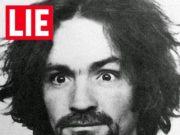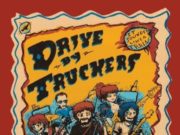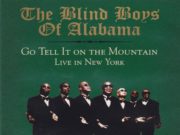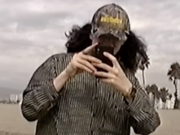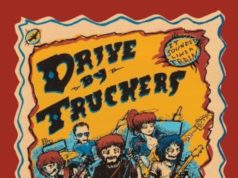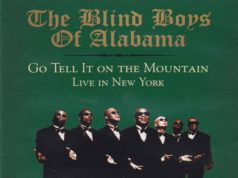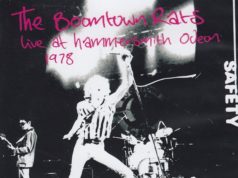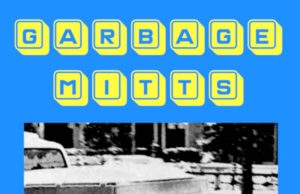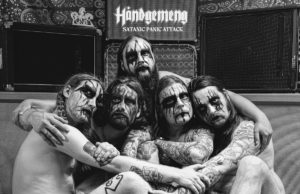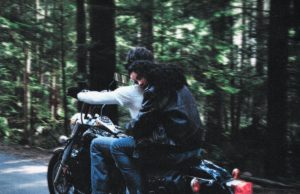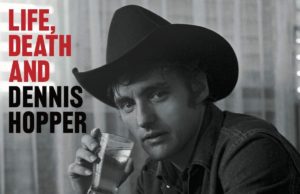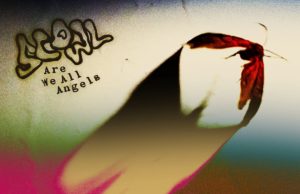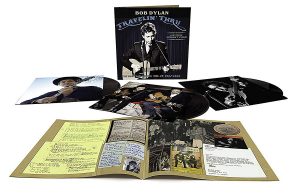 There are so many bands with multiple drummers. Most of my own Area Resident music these days has multiple drum tracks, even if we’ve never performed live that way. King Crimson have performed with as many as three.
There are so many bands with multiple drummers. Most of my own Area Resident music these days has multiple drum tracks, even if we’ve never performed live that way. King Crimson have performed with as many as three.
Multiple guitarists is also obviously a common thing — The Allman Brothers Band had three at all times, setting the standard for southern rockers like Lynyrd Skynyrd. Blue Öyster Cult sometimes hit the stage with five. Crosby, Stills, Nash & Young had four, of course. Loads of bands have multiple lead vocalists — I’ve written about that before — and multiple keyboard players is almost always a thing. But beyond Spinal Tap, I had to wrack my brain to come up with bands which make use of multiple bass players. Big Bottom (above) is obviously the benchmark.
Right away, we can go right back to King Crimson. Their 1995 studio album Thrak was made largely with what leader Robert Fripp referred to as a double trio — two drummers, two guitarists and two bass players. On some tracks you get one trio performing in the left channel and the other trio in the right. The two bass players were Tony Levin and Trey Gunn. Behold the double trio:
Ornette Coleman did a similar thing many years earlier on the 1961 album Free Jazz, except he employed a double quartet including a pair of bass players: Charlie Haden and Scott LaFaro.
Speaking of boundary-defying jazz, Miles Davis also had two bass players for parts of his Bitches Brew album. And if we want to speak specifically about double quartets, Frank Zappa took one on the road in 1978. His two bassmen were Arthur Barrow and Patrick O’Hearn.
I just found out that a song which was a mixtape mainstay of mine for many years, was made by a band sporting two bassists — Bullet Proof Cupid by Girls Against Boys from their 1993 debut. Bass by Johnny Temple and Eli Janney. Similarly, Lou Reed’s signature song Walk On The Wild Side features twin basslines — one acoustic and one electric. In this case, both were played by session musician Herbie Flowers (who claimed he came up with the idea so he could double his pay).
Another ’90s band, Ned’s Atomic Dustbin, had two bass players in the studio and for live shows. Multi-instrumentalist Alex Griffin primarily took the melody lines on one bass, while Matt Cheslin played the regular bass parts as usual. It gave the band a powerful sound, as you can witness here:
The Cure occasionally would do something similar, with bassist Simon Gallup playing a regular bass and frontman Robert Smith using a Fender Bass VI for the melodic parts. They also would just simply use two basses, like they did on 1981’s Primary — a pair of black Fender Precisions, with maple necks. Oh my goodness, Robert is so young in this clip:
Randy Bachman occasionally grabbed a Hagstrom eight-string bass to augment the punch of Bachman-Turner Overdrive and bassist Fred Turner in the 1970s. Talking Heads also incorporated two basses from time to time. James Brown clearly has two bass players in this 1971 performance. One of them just happens to be Bootsy Collins:
Funk music is obviously one style which lends itself well to two basses. Dumpstaphunk are a more modern example of multiple-bass bands. But the same goes for disco. The Trammps were basically (no pun intended) a one-hit wonder. But what a hit. Disco Inferno has two bass players — one front left and the other back right. Well, I heard somebody say that.
Collectible Montreal post-rockers Godspeed You! Black Emperor has two bass players, because of course they do. Mauro Pezzente and Thierry Amar hold down the bass in a band with more members than the cast of Saturday Night Live — with multiple members credited for “film projection.”
More post-rock! Instrumental beauties Tortoise initially sported two bass players and three percussionists in the early ’90s. And, speaking of tortoises, indie cult fave Thinking Fellers Union Local 282 were introduced to me via a Matador sampler I bought. I didn’t know until now they had two bass players (Mark Davies and Anne Eickelberg). Though I suppose it’s more accurate to say they’re a band of multi-instrumentalists. Still love this song, from that Matador compilation:
And then you’ve got a bunch of bands with excessive bass — some who even tell you that just from their name. Bands like Bassinvaders, Freebass and Overbass. Evil Blizzard has four bass players and a drummer. More well-known, N.Y.C. experimental band Swans have three bass players.
Mike Watt of The Minutemen and Kira Roessler of Black Flag teamed up to form dos — a duo of two bass players. And there are also lesser-known bands like Molotov, Delta 5 and Paul Newman — but let’s not forget one of the first. Back in 1970 Shun Gon (piano and drums), Hit Cat (acoustic bass), Peppo (concertina), Billy Boss (double bass) and Scat Cat (trumpet) got together to form The Alley Cats in The Aristocats, my kids’ introduction to racist stereotypes.
Ah, memories.
• • •
Area Resident is an Ottawa-based journalist, recording artist, music collector and re-seller. Hear (and buy) his music on Bandcamp, email him HERE, follow him on Instagram and check him out on Discogs.




